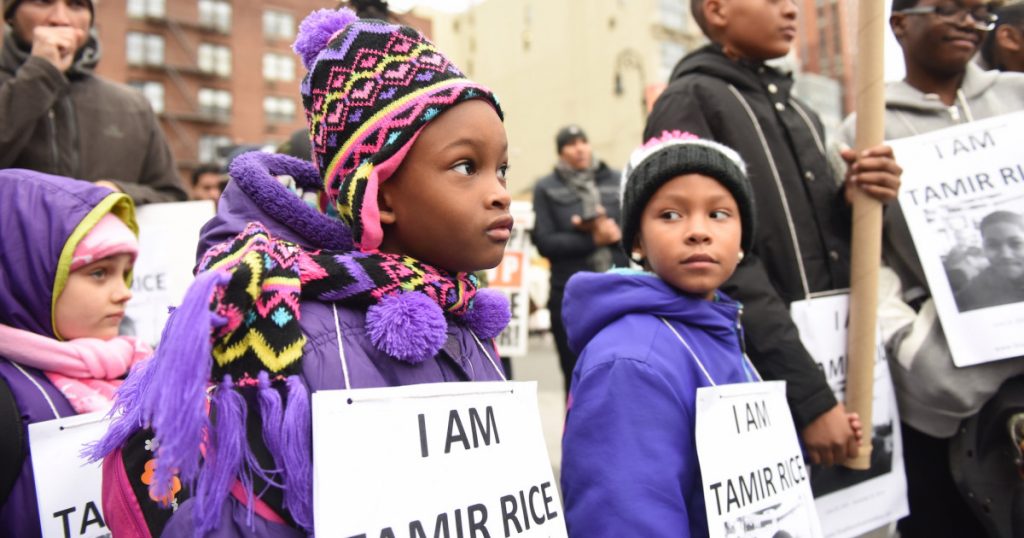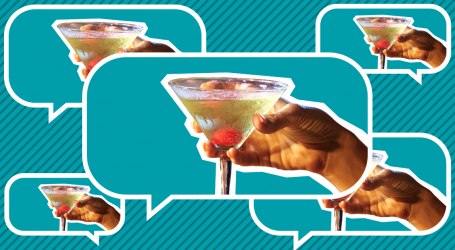Kids Have Alway Led the Way for Progress. The Push for Gun Control Is No Different.
Stop Mass Incarcerations Network sponsored a children’s march demanding accountability on the one year anniversary of Tamir Rice’s death at the hands of the Cleveland police. Andy Katz/AP
Looking for news you can trust?Subscribe to our free newsletters.
After the mass shooting at Marjory Stoneman Douglas High School in Parkland, Fla., last week, it quickly became clear that it wouldn’t be politicians or veteran activists leading the effort to demand action against gun violence—it would be students.
Calls for action from the Stoneman Douglas students and their peers across the country have received an outpouring of support in the form of national attention and celebrity donations: Just this week, George Clooney, Steven Spielberg, and Oprah Winfrey each pledged to donate $500,000 to the March for Our Lives, a group “created and led” by kids to organize a national protest against gun violence on March 24 in Washington, D.C.
George and Amal, I couldn’t agree with you more. I am joining forces with you and will match your $500,000 donation to ‘March For Our Lives.’ These inspiring young people remind me of the Freedom Riders of the 60s who also said we’ve had ENOUGH and our voices will be heard.
— Oprah Winfrey (@Oprah) February 20, 2018
Wednesday night, several Stoneman Douglas students stunned the nation by grilling elected officials and NRA spokesperson Dana Loesch at a town hall. The following morning, Obama praised the young folks in a tweet: “How inspiring to see it again in so many smart, fearless students standing up for their right to be safe; marching and organizing to remake the world as it should be. We’ve been waiting for you.”
But as Roxane Gay, a celebrated American writer, pointed out on Twitter, this is not the first time kids have been doing the hard work of political organizing and protest in the wake of trauma.
It is interesting to note the difference in support for the kids in FL versus the kids in Black Lives Matter. I say that with full admiration for the kids in FL, to survive such a trauma and fight for everyone to be safer. But that’s also what was happening in Ferguson and beyond
— roxane gay (@rgay) February 21, 2018
Gay is, of course, correct. Throughout history, kids from all backgrounds have been crucial in the fight for social justice.
Child Labor Protests
Mother Jones and her “army” of textile workers on their march from Philadelphia to New York City to protest child labor.
Library of Congress, Pierce & JonesTeenagers and children played a major role throughout the civil rights movement. In 1955, before Rosa Parks refused to give up her seat on a bus in Montgomery, Ala., another young woman by the name of Claudette Colvin did the same thing—except she was 15 years old. After she was arrested and sent to jail, Colvin became one of the four plaintiffs in the Browder v. Gayle Supreme Court case, which ultimately desegregated buses in Alabama.
In 1957, the governor of Arkansas dispatched the state national guard to prevent the students who went down in history as the Little Rock Nine from attending a newly integrated high school. President Eisenhower sent 1,200 soldiers to protect them later that month. In spite of daily threats and violence, the students attended the school for the full year.
Less than a decade after that, thousands of children and teenagers protested segregation by marching across Birmingham, Ala., on May 2, 1963. Hundreds of black children were arrested and crowded into the local jails. The next day, on orders from a city official, police sprayed the children who continued to march with water hoses and hit them with batons. They kept going anyway.
Over 1000 children and teens were arrested in protests on May 2, 1963 in Birmingham. The city ran out of jail space. pic.twitter.com/0GgWsfYseQ
— Maria Chong (@mariachong) February 21, 2018
“We didn’t hate white people,” Janice Wesley Kelsey, who was arrested at the protests when she was in 11th grade, recalled to The New Yorker. “We didn’t even know any. We hated the system. That’s what we were protesting about.”
Eight days later, civil rights leaders announced that they had come to an agreement with city officials: Birmingham would desegregate businesses and release the detained protesters.
Two months after that, President Kennedy took to national television to denounce segregation and propose new civil rights legislation.
As Gay noted, children and teenagers have also been heavily involved in the Black Lives Matter movement since its inception. In 2014, for example, after police officer Darren Wilson shot and killed unarmed black teenager Michael Brown, black kids were heavily present in the protests that became a major turning point for the movement.
Children watch from their home as people march to protest the shooting of Michael Brown in Ferguson, Mo. Many residents of the St. Louis suburb have said they feel like they are living in a war zone following the shooting of Michael Brown by police.
Charlie Riedel / Associated PressParents across the country recognized the historical importance of the moment and wanted their children to bear witness.
“It was important for them to be there,” Kendra Pierson, who brought her sons to an Atlanta vigil to honor Brown, told Huffington Post. “When they look back, in 10 years or five years, I want them to know they were there.” Pierson’s children were six and two years old at the time.
Protester Janelle Pittman holds her 6-year-old daughter, Kat, as police in riot gear stand guard in Ferguson, Mo. on Wednesday, Aug. 13, 2014.
Jeff Roberson / Associated Press.Their activism has continued on through the present.
As demonstrators begin to gather, children and adults hold signs during a rally Tuesday, Nov. 25, 2014, in Charlotte, N.C. to protest the grand jury decision not to indict a police officer for the death of Michael Brown.
John D. Simmons / AP Photo/The Charlotte Observer




